3point14 Pi day March 14th Scots Book of Days
3point14 pi Day March 14 pie day. The ratio of the circumference of a circle to its diameter. Area of a circle is ‘pi’ times square of half the diameter (radius). ‘pi’ is an irrational number, never ends, never repeats. Per Michelle Schaffer, Arlington 1st Ward McLean Virginia Stake. Pi also calculates the volume of a sphere, which is among the most efficient forms in the universe (i.e. the sun, moon and stars are all spheres – round), and the volume of a cylinder (i.e. columns, glasses, cups, poles.)
 Maybe in Perthshire? Sphere Mania.
Maybe in Perthshire? Sphere Mania.
Wikipedia. Also, π is a transcendental number – a number that is not the root of any non-zero polynomial having rationall coefficients. This transcendence of π implies that it is impossible to solve the ancient challenge of squaring the circle with a compass and straightedge.
1290 Robert VI the Bruce, 6th Lord of Annandale, Earl of Carrick (1253–1304) party to the Treaty of Birgham
Brus or Bruce 1050 2Stewart2Kennedy 2Montgomery2Blair 2Cochrane2Miller 2Simmons2Choate zoe ToaG
Bruce Attempts to end competing claims between the House of Balliol and the House of Bruce for the Scottish throne; Treaty of Birgham never comes into effect, also referred to as the Treaty of Salisbury, comprised two treaties intended to secure the independence of Scotland after Alexander III died without issue in 1286. Guaranteed by Edward, Prince of Wales, the purpose of the treaty was to put to rest the competing claims of the House of Balliol and the House of Bruce. The treaties were drawn up in Salisbury in 1289 and Birgham, Berwickshire, in 1290. Under the condition that the heiress of Scotland Margaret, the Maid of Norway, would marry Edward, Scotland was to remain “separate and divided from England according to its rightful boundaries, free in itself and without subjection.”
 Edward II, depicted in Cassell’s History of England, published circa 1902
Edward II, depicted in Cassell’s History of England, published circa 1902
1455 , sometime in March. James Hamilton, 1st Lord Hamilton (c. 1415–1479) In March of 1455, King James II took to the field against Douglas, sacking his properties and burning his crops. Hamilton’s lands, he being a partisan of the Douglases, were also particularly devastated. James II turned his attention to the mighty Douglas stronghold of Abercorn Castle, and set about besieging it. Douglas mustered his men from Douglasdale, Galloway and the Forest; Hamilton, his levies from Clydesdale. The troops marched to raise the siege, but the Earl of Douglas’ indecision on a plan of attack is said to have perplexed Hamilton, and caused him to withdraw his support for the Douglas cause. Hamilton changed sides and became a partisan of the Royal party. There is evidence to suggest that Hamilton’s uncle, James Livingstone, 1st Lord Livingston had a part in this change of heart.
[Hamilton 2Stewart 2Millar 2simmons 2Choate 2Sorensen]
1547 The Great Lion was captured off Dover on 14 March 1547 by Sir Andrew Dudley, brother of the Duke of Northumberland who gave her a broadside from the Pauncey.
1599 never happened in Scotland. Did happen in England, though.
1708 weather blows English fleet away from Dunkirk. TG 62-145]
1740 Duke of Fraser created 14 March 1740 for Fraser became extinct 8 December 1815 for the 11th Lord Lovat.
1751 did not occur in England, Ireland, British North America, and British colonies, as 1751 only had 282 days due to the Calendar Act of 1750. But 1751 did occur in Scotland, as 1751 had 365 days. The world’s oldest lunar “calendar” is in an Aberdeenshire field.
1757 British Admiral John Byng is executed at Portsmouth for failing in an attack against the French.
1831 Joseph Smith the Prophet, at Kirtland, Ohio, (clan Mack of Inverness, Malcolm King of Scots). In March. Doctrine and Covenants 48. Save all the money that ye can.
1903 – The Hay-Herran Treaty, granting the United States the right to build the Panama Canal, is ratified by the United States Senate. The Colombian Senate would later reject the treaty. 204 years after Scots tried the lost colony of Darien.
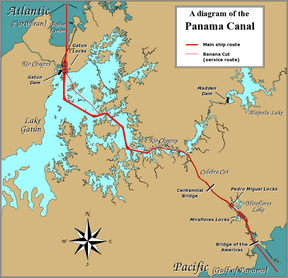 1903 – The Hay-Herran Treaty, granting the United States the right to build the Panama Canal, is ratified by the United States Senate. Engineer John Findlay Wallace.
1903 – The Hay-Herran Treaty, granting the United States the right to build the Panama Canal, is ratified by the United States Senate. Engineer John Findlay Wallace.
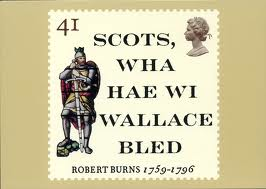 Scots, wha hae wi Wallace Bled. Robert Burns 1759-1786
Scots, wha hae wi Wallace Bled. Robert Burns 1759-1786
1920 Osborne John Peder Widtsoe (December 12, 1877 – March 14, 1920) was principal of the Latter-day Saints University in Salt Lake City, Utah and a professor of English at the University of Utah. He was also the first missionary of The Church of Jesus Christ of Latter-day Saints (LDS Church) to serve in Rarotonga, Cook Islands discovered by Captain James Cook, Scottish explorer and son of James Cook, a Scottish farm labourer from Ednam in Roxburghshire. Wikipedia.
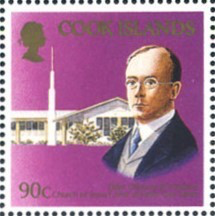 Cook Island stamp shows Elder Os.J.P. Widtsoe. Note silouette of Queen Elizabeth 2nd.
Cook Island stamp shows Elder Os.J.P. Widtsoe. Note silouette of Queen Elizabeth 2nd.
http://www.ldsliving.com/11-Postage-Stamps-with-Mormon-Pictures-on-Them/s/79398
1942 – Orvan Hess and John Bumstead became the first in the United States successfully to treat a patient, Anne Miller, using penicillin (of the kingdom funcus). Sir Alexander Fleming, the Scottish biologist, was the first to recognize the therapeutic potential of penicillin at St. Mary’s Hospital in London in 1928.
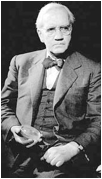 Alexander Fleming, (1881-1955) from Ayrshire graduated from London University Medical School in 1906, served with the Royal Army Medical Corps in World War I, and joined the staff of the Royal College of Surgeons. In 1928, while working with bacteria, he discovered a substance he called “penicillin” [a bacterium which polluted a test of an infectious bug, by killing the bad bug]. Fleming was knighted in 1944 and won the Nobel Prize for Medicine in 1945.
Alexander Fleming, (1881-1955) from Ayrshire graduated from London University Medical School in 1906, served with the Royal Army Medical Corps in World War I, and joined the staff of the Royal College of Surgeons. In 1928, while working with bacteria, he discovered a substance he called “penicillin” [a bacterium which polluted a test of an infectious bug, by killing the bad bug]. Fleming was knighted in 1944 and won the Nobel Prize for Medicine in 1945.
In March 1942, Mrs. Miller was near death at New Haven Hospital suffering from a deadly streptococcal infection. She had been hospitalized for a month, often delirious with her temperature spiking to nearly 107, while doctors tried everything available, including sulfa drugs, blood transfusions and surgery. All failed. As she slipped in and out of consciousness, her desperate doctors obtained a tiny amount of what was still an obscure, experimental drug and injected her with it. Her hospital chart, now at the Smithsonian Institution,
registered a sharp overnight drop in temperature, and by the next day she was no longer delirious and soon was eating full meals, one of her doctors reported. Mrs. Miller’s life was saved, and so eventually were the lives of all those previously felled by infections of bacteria like streptococci, staphylococci and pneumococci. Penicillin also saved the lives of an servicemen and civilians wounded in World War II; in earlier wars, people died by the thousands from bacterial infections resulting from their injuries. The good Samaritan (Luke 10:25-37) poured in oil and wine, both bacteriacides, into the wounds of the certain man. A native New Yorker, Mrs. Miller graduated in 1931 from Columbia Presbyterian School of Nursing, now part of Columbia University. The next year, she married Ogden D. Miller, a Yale University administrator. She lived to age 90, dying on May 27 in Salisbury Connecticut. Source June 9, 1999 New York Times.
The package left Merck’s laboratory in Rahway, New Jersey, on its way to a hospital in New Haven, Connecticut. Inside was a glass vial —5.5 grams of an experimental brown powder known as penicillin—half the total amount available in the United States at the time. Anne Miller was close to death. Mrs. Miller was a nurse, a mother and the wife of Yale University’s Athletic Director. She had become ill following a miscarriage and was taken to the hospital in February 1942. Dr. Bumstead had what he and his physician colleagues considered to be somewhat of a celebrity patient under his care. Dr. John Farquhar Fulton, Sterling Professor of Physiology at Yale Medical School, had contracted coccidiomycosis while visiting military installations in the San Joaquin Valley as a member of the Committee on Aviation Medicine in California. Dr. Fulton had devised a small-scale fermentation process for penicillin in the U.K. and was travelling between his homeland and the United States to encourage large-scale production. Excited at the prospect of facilitating a clinical test for Bumstead’s patient, Nurse Miller, for the experimental medicine, Dr. Fulton began working the phones from his hospital bed to track down and secure a few grams. After tracking down a number of people overseeing the penicillin effort for the National Research Council in Washington, D.C., Dr. Fulton finally secured the release of a few grams of penicillin. By the morning of Saturday, March 14, 1942, Anne Miller was stepping in and out of consciousness. Her doctors felt that the end was only hours away. When Dr. Bumstead finally had the package of penicillin in his hand he realized that he lacked any information about administration and dosing for the experimental drug. Because the medicine had never before been administered in the U.S. With the best guesses of the medical experts on dosing, Mrs. Miller received her first injection of penicillin at about 3:30 in the afternoon. Within four hours, her temperature dropped to 99 degrees; by 4 A.M. on Sunday morning, it was normal. The production of penicillin was so successful in the United States that, by D-Day in Normandy, June 6, 1944, there was sufficient penicillin to treat all severe casualties, both British and American.
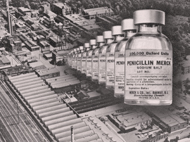 1945 Merck Advertisement: “Penicillin: A Notable Production Achievement. Ann was survived by Ogden Dayton. Jr., of Vienna, Va., David P., of Darlington, Md., and Dwight D., of Watertown, Mass.; a brother, Theodore H. Sheafe of Tigard, Ore.; a sister, Mary S. Jewett of Lyme, Conn.;
1945 Merck Advertisement: “Penicillin: A Notable Production Achievement. Ann was survived by Ogden Dayton. Jr., of Vienna, Va., David P., of Darlington, Md., and Dwight D., of Watertown, Mass.; a brother, Theodore H. Sheafe of Tigard, Ore.; a sister, Mary S. Jewett of Lyme, Conn.;
1975 Monty Python and the Holy Grail released, filmed mostly in Scotland, particularly around Doune Castle, Glen Coe, and the privately owned Castle Stalker. The many castles seen throughout the film were either Doune Castle shot from different angles or hanging miniatures.
2018 Stephen William Hawking Cambridge professor died in Cambridge, England at age 76. (Born 8 January 1942 in Oxford. Wow, the guy died on Pi day! Hawking’s maternal grandfather was James Walker born in Glasgow. (the son of Archibald Walker and Janet Audrey Margaret Morris). Archibald was the son of Archibald Walker and Isobel McIntyre Ewing. Janet was the daughter of William John Morris and Margaret McGregor.
Stephen’s maternal grandmother was Elisabeth Agnes “Nancy” Stevenson Law, born Glasgow, (the daughter of Andrew Law and Agnes Stevenson). Stephen’s great-grandmother Agnes was the daughter of Robert Stevenson married 6 August 1852 in Melrose, Roxburgh, Scotland to Isabella Hyslop.
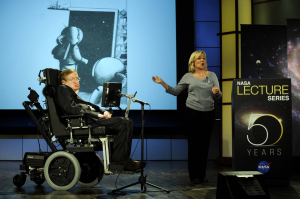 NASA Honors Legacy of Renowned Astrophysicist Stephen Hawking
NASA Honors Legacy of Renowned Astrophysicist Stephen Hawking
Utah Standard News depends on the support of readers like you.
Good Journalism requires time, expertise, passion and money. We know you appreciate the coverage here. Please help us to continue as an alternative news website by becoming a subscriber or making a donation. To learn more about our subscription options or make a donation, click here.
To Advertise on UtahStandardNews.com, please contact us at: ed@utahstandardnews.com.


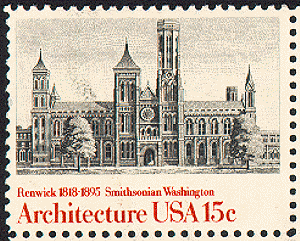
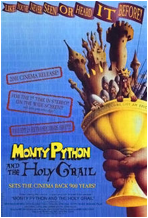
Comments - No Responses to “3point14 Pi day March 14th Scots Book of Days”
Sure is empty down here...